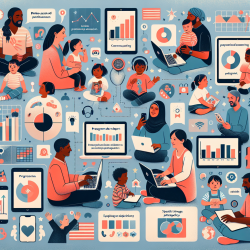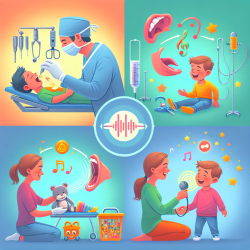As practitioners in the field of speech-language pathology, our goal is to create the best possible outcomes for the children we serve. One innovative and evidence-based method to enhance our practice is through the use of children's drawings as a diagnostic and therapeutic tool. This approach is supported by historical and contemporary research, including the findings presented in the article "Drawing as Instrument, Drawings as Evidence: Capturing Mental Processes with Pencil and Paper" by Alicia Puglionesi.
Children's drawings have long been recognized as a window into their cognitive and emotional worlds. The act of drawing engages multiple cognitive processes, including visual perception, motor skills, and symbolic thinking. By analyzing these drawings, we can gain valuable insights into a child's developmental stage and cognitive abilities.
Key takeaways from the research include:
- Developmental Milestones: Drawings can reveal typical developmental milestones in children's cognitive growth. For instance, the progression from scribbles to more detailed representations correlates with cognitive and motor development.
- Diagnostic Tool: Drawings can be used to identify potential cognitive or neurological impairments. Children with certain developmental disorders may exhibit unique patterns in their drawings, such as difficulties with spatial relationships or perspective.
- Therapeutic Applications: Encouraging children to draw can serve as a therapeutic activity, helping them to express emotions and thoughts that they might find difficult to verbalize. This can be particularly beneficial for children with speech and language impairments.
Implementing these insights into your practice can be straightforward. Here are some practical steps:
- Incorporate Drawing Tasks: Integrate drawing tasks into your assessment protocols. Ask children to draw familiar objects, people, or scenes and observe the details and accuracy of their representations.
- Analyze and Document: Carefully analyze the drawings for developmental markers and any signs of atypical development. Document your observations to track progress over time.
- Use as a Communication Tool: Utilize drawings as a medium for children to communicate their feelings and experiences. This can be especially useful for children who struggle with verbal expression.
By incorporating the analysis of children's drawings into your practice, you can enhance your diagnostic capabilities and provide more tailored and effective interventions. This approach not only aligns with data-driven decision-making but also supports a holistic understanding of each child's unique cognitive and emotional landscape.
To read the original research paper, please follow this link: Drawing as Instrument, Drawings as Evidence: Capturing Mental Processes with Pencil and Paper.










